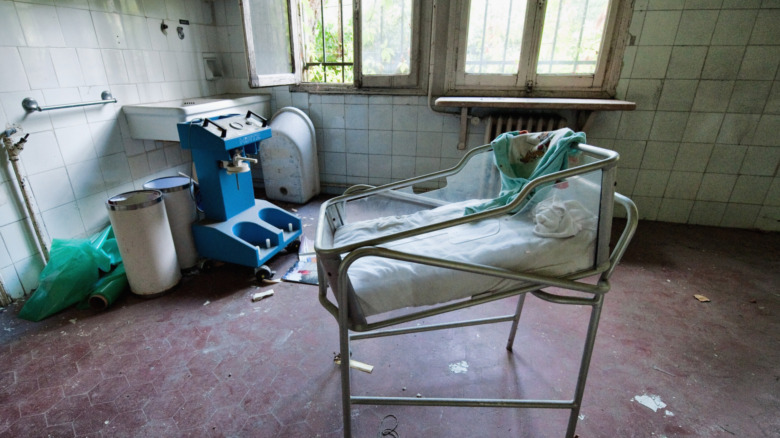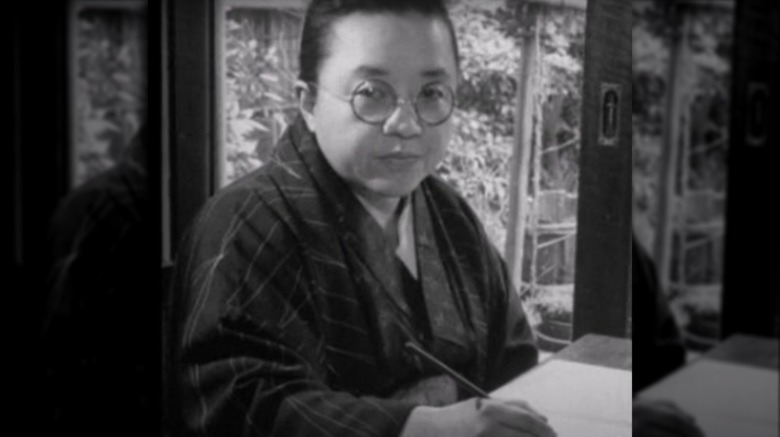Details You Should Know About Serial Killer Miyuki Ishikawa
This probably goes without saying, but in late-1940s Japan, things were less than great. Their defeat in World War II had killed more than three million of their population, devastated their economy, and destroyed Hiroshima and Nagasaki, two of their major cities. Bread lines weren't uncommon, unemployment was high, and on top of everything else, the boys returning from war had resulted in a baby boom. You can imagine how reluctant would-be parents were to bring children into such a world, but one woman had the solution. Well, a solution, if you consider murder a solution.
Miyuki Ishikawa, who was director of Kotobuki maternity hospital, realized something about infants: if you don't feed them, they die. The problem takes care of itself. Essentially, by doing nothing — literally, just not doing her job caring for newborn infants — Ishikawa managed to become (according to Cultura Collectiva) the most prolific serial killer in Japanese history.
Ishikawa came from humble beginnings
Little is known about Ishikawa's early life, but she is thought to have been born around 1897 in the small town of Kinitomi. She attended the University of Tokyo, landed a job as a midwife, and eventually worked her way to the top. By the time she was there, though, things were bleak. According to Ben Kageyama, people in post-war Japan were often forced to wait in line for hours for a single bowl of ramen. Women were coming to Ishikawa's ward, giving birth, and then abandoning their children. Ishikawi's solution was to let the children die and dispose of the bodies.
It was a foolproof plan, at least until Ishikawi (pictured above) and her accomplice husband started running out of places to stash the evidence. In 1948, two Waseda police officers accidentally came upon the remains of five infants, and autopsies showed that they hadn't died of natural causes. From there, it was only a matter of time before more were discovered, including 40 stashed in a mortician accomplice's house, and another 30 buried under a temple. In all, Ishikawa was accused of a total of 103 murders, though it's been suggested the actual number was as high as 169 (via History of Yesterday).
It also didn't help that Ishikawa had begun trying to turn her mass-murder into a moneymaking operation, sending her husband to extort the dead infants' parents into paying for the coverup, arguing that her fees were still cheaper than the cost of raising a child (via Absolute Crime).
At trial, Ishikawa received a surprising amount of public support
When she was put on trial, Ishikawa and her lawyers tried to argue that the parents were the real villains, for abandoning their children. They also mounted the case that, since Japanese law (at the time) afforded very few rights to infants, what Ishikawa had done wasn't really mass murder (via Cultura Collectiva). Activist and author Miyamoto Yuriko tried to argue that this was a clear example of discrimination, but Ishikawa actually received a surprising amount of public support, suggesting things really were that bad in Japan, and resulting in a shockingly light sentence for someone accused of more than 100 murders. The jury found her guilty of a "crime of omission," and sentenced her to a mere eight years in prison, which she managed to shorten to four on appeal. (Her accomplices, her husband and the doctor who forged the death certificates, each received four years as well.)
Ishikawa's main legacy turned out to be the liberalizing of Japan's abortion laws. In 1949, the Japanese government passed the Eugenic Protection Act, which allowed abortion for dire economic reasons (via Criminology), apparently figuring that, whatever the moral ambiguities of abortion, it was less horrific than stuffing dead babies under temples. And Ishikawa herself seems to have disappeared from the pages of history — no one has yet found her date of death.


